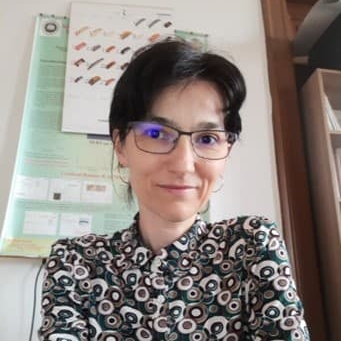Recent Progress in Functional Materials and Their Applications
A special issue of Materials (ISSN 1996-1944). This special issue belongs to the section "Advanced Composites".
Deadline for manuscript submissions: 20 July 2024 | Viewed by 1977

Special Issue Editors
Interests: materials for biomedical, environmental and technological applications
Special Issues, Collections and Topics in MDPI journals
2. Faculty of Biology and Geology, Babeș-Bolyai University, Centre 3B, STAR-UBB, Cluj-Napoca, Romania
Interests: photocatalysis; ecotoxicology; environment–nanoparticle interaction; photochemistry
Special Issues, Collections and Topics in MDPI journals
Interests: raman and IR spectroscopy; SERS; nanostructures; pharmaceuticals; photocatalysts; carbon-based nanomaterials
Special Issues, Collections and Topics in MDPI journals
Special Issue Information
Dear Colleagues,
Materials with desired properties for specific applications, such as electric, optical, thermal, mechanical, or magnetic, are called functional materials and have gained great attention in recent years. Considering that the physical, chemical, or biological properties of functional materials can be sensitive to changes in their structural arrangements in any dimensional range (i.e., micrometer, nanometer, or sub-nanometer scale), the study of nanostructured functional materials and their applications has become a key point of interest. Although there are many publications regarding functional materials, many experimental and theoretical aspects are still uncovered. On the other hand, there are recent signs of progress related to the performances of certain already in-use materials that originate from their specific properties. All the aspects mentioned above that are aimed at improving the performance of those structures for targeted applications are worth being reported in this Special Issue.
Topics of interest include but are not limited to:
- Biomaterials
- Composites for energy;
- Magnetic functional materials;
- Materials for electronics and photonics;
- Functional materials synthesis and processing;
- Functional materials theory, computation, and design;
- Materials for environmental applications;
- Surfaces and interfaces of functional materials;
- Smart materials;
- Hierarchical structures.
Prof. Dr. Lucian Baia
Dr. Zsolt Pap
Dr. Monica Baia
Guest Editors
Manuscript Submission Information
Manuscripts should be submitted online at www.mdpi.com by registering and logging in to this website. Once you are registered, click here to go to the submission form. Manuscripts can be submitted until the deadline. All submissions that pass pre-check are peer-reviewed. Accepted papers will be published continuously in the journal (as soon as accepted) and will be listed together on the special issue website. Research articles, review articles as well as short communications are invited. For planned papers, a title and short abstract (about 100 words) can be sent to the Editorial Office for announcement on this website.
Submitted manuscripts should not have been published previously, nor be under consideration for publication elsewhere (except conference proceedings papers). All manuscripts are thoroughly refereed through a single-blind peer-review process. A guide for authors and other relevant information for submission of manuscripts is available on the Instructions for Authors page. Materials is an international peer-reviewed open access semimonthly journal published by MDPI.
Please visit the Instructions for Authors page before submitting a manuscript. The Article Processing Charge (APC) for publication in this open access journal is 2600 CHF (Swiss Francs). Submitted papers should be well formatted and use good English. Authors may use MDPI's English editing service prior to publication or during author revisions.
Keywords
- biomaterials
- functional nanomaterials
- polymers
- ceramics
- functional composites
- surface
- interface








